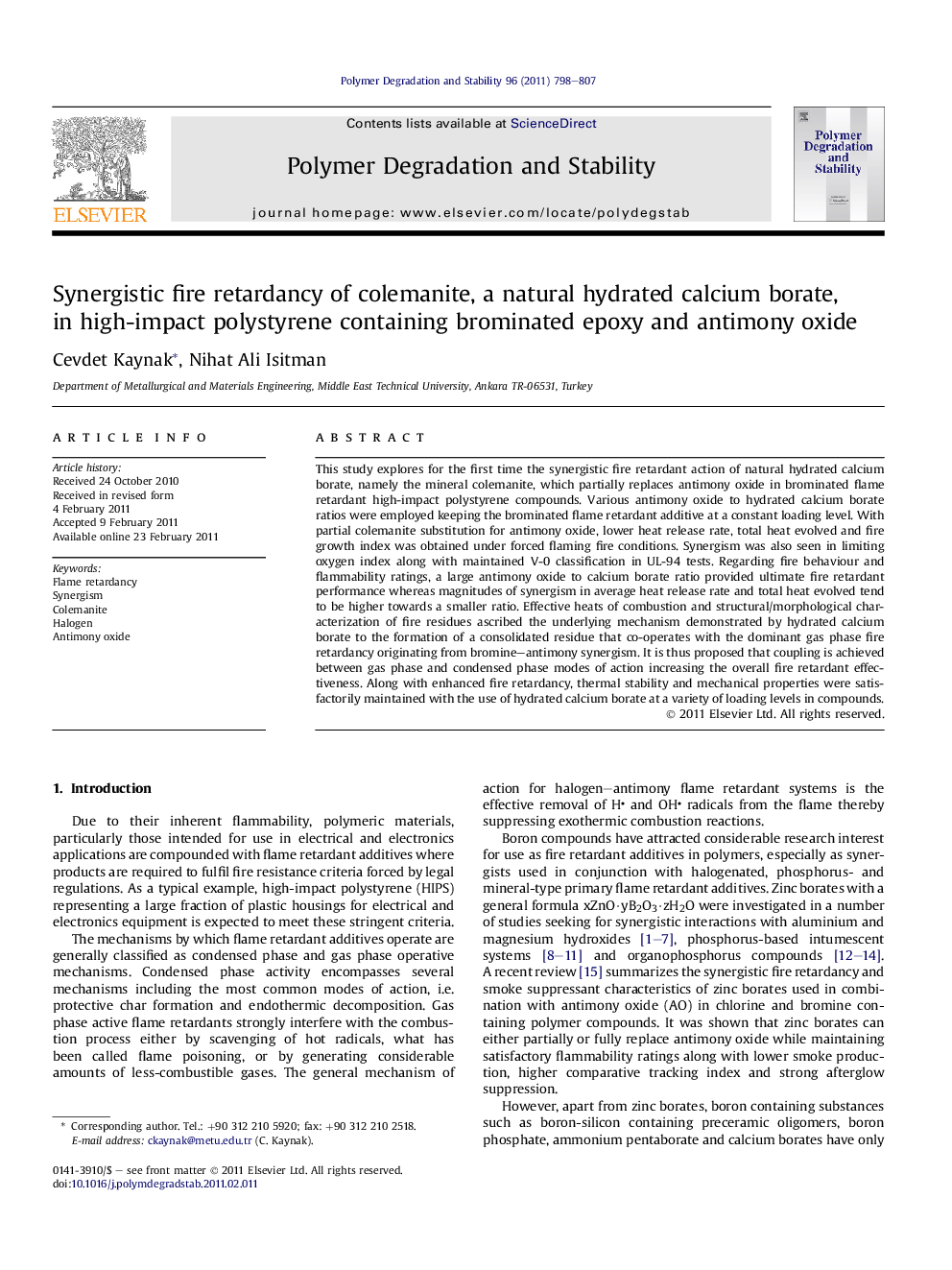| Article ID | Journal | Published Year | Pages | File Type |
|---|---|---|---|---|
| 5202685 | Polymer Degradation and Stability | 2011 | 10 Pages |
Abstract
This study explores for the first time the synergistic fire retardant action of natural hydrated calcium borate, namely the mineral colemanite, which partially replaces antimony oxide in brominated flame retardant high-impact polystyrene compounds. Various antimony oxide to hydrated calcium borate ratios were employed keeping the brominated flame retardant additive at a constant loading level. With partial colemanite substitution for antimony oxide, lower heat release rate, total heat evolved and fire growth index was obtained under forced flaming fire conditions. Synergism was also seen in limiting oxygen index along with maintained V-0 classification in UL-94 tests. Regarding fire behaviour and flammability ratings, a large antimony oxide to calcium borate ratio provided ultimate fire retardant performance whereas magnitudes of synergism in average heat release rate and total heat evolved tend to be higher towards a smaller ratio. Effective heats of combustion and structural/morphological characterization of fire residues ascribed the underlying mechanism demonstrated by hydrated calcium borate to the formation of a consolidated residue that co-operates with the dominant gas phase fire retardancy originating from bromine-antimony synergism. It is thus proposed that coupling is achieved between gas phase and condensed phase modes of action increasing the overall fire retardant effectiveness. Along with enhanced fire retardancy, thermal stability and mechanical properties were satisfactorily maintained with the use of hydrated calcium borate at a variety of loading levels in compounds.
Related Topics
Physical Sciences and Engineering
Chemistry
Organic Chemistry
Authors
Cevdet Kaynak, Nihat Ali Isitman,
